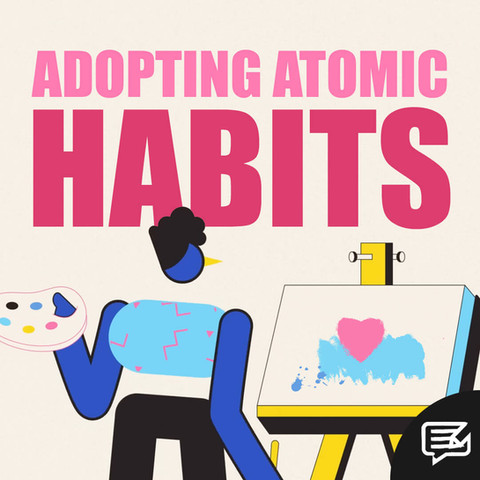
30.10.21
FUTURISTIC FARMING
When I think of farming, I picture tractors, wellington boots, hay bales and an awful lot of hard work. A farm would be one of the last places I’d consider to be futuristic. But I’d be wrong. Agritech start-ups around the world are on a mission to reinvent farming. And yes, we’re talking robots.
In December 2020, Intelligent Living published an article detailing how a two-acre vertical farm run by artificial intelligence and robots out-produced a 720-acre flat farm. That’s quite the headline – and one that might put dear Old MacDonald out of a job.



The vertical farm in question was set up by Plenty, a start-up based in San Francisco. By switching to indoor vertical farming, their produce can grow year-round, anywhere in the world. Better still, it requires 95% less water and 99% less land than traditional flat farms.
Intelligent Living explains:
“Plenty’s climate-controlled indoor farm has rows of plants growing vertically, hung from the ceiling. There are sun-mimicking LED lights shining on them, robots that move them around, and artificial intelligence (AI) managing all the variables of water, temperature, and light, and continually learning and optimizing how to grow bigger, faster, better crops. These futuristic features ensure every plant grows perfectly year-round. The conditions are so good that the farm produces 400 times more food per acre than an outdoor flat farm.”
The article continues:
“Another perk of vertical farming is locally produced food. The fruits and vegetables aren’t grown 1,000 miles away or more from a city; instead, at a warehouse nearby. Meaning, many transportation miles are eliminated, which is useful for reducing millions of tons of yearly CO2 emissions and prices for consumers. Imported fruits and vegetables are more expensive, so society’s most impoverished are at an extreme nutritional disadvantage. Vertical farms could solve this problem.”
It sounds too good to be true, especially when you learn Plenty do not use herbicides or pesticides, but recycle all water used, use 100% renewable energy and 100% recyclable packaging.
No wonder Plenty has been backed by some of the biggest names in tech – former Google chairman Eric Schmidt and Amazon’s Jeff Bezos among them.
Supply chain disruptions and labour shortages caused by the COVID-19 pandemic have served to solidify a need for vertical farming, but there is a long way to go as the Financial Times article “Vertical farming: hope or hype?” explains:
“The sector remains largely unprofitable and tiny. Vertical farming occupies the equivalent of 30 hectares of land worldwide, according to Rabobank analyst Cindy Rijswick, compared with outdoor cultivation of about 50m ha and 500,000 ha for greenhouses. High initial capital investment and running costs mean it is hard to make a profit. Businesses must pay for specialised labour and face huge electricity bills for lighting and ventilation, while having to offer competitive prices to attract consumers…
“The industry is expected to grow over the next decade, with research group IDTechEx forecasting that annual sales of $700m will more than double to $1.5bn by 2030. However, there is likely to be a cull of inefficient businesses in a sector that has always had a high level of failures.”
Companies such as Square Roots are operating successfully on a smaller scale, serving local urban communities from shipping containers in car parks. The pandemic has seen the company scale up in recent months, as outlined in their April 2021 blog:
“Central to our ability to move fast and meet demand is our modular farm-tech platform. Capital-efficient and pre-fabricated inside upcycled shipping containers, ready-to-go farms can be shipped and deployed just-in-time to any site in the world, immediately creating the perfect conditions for growing the highest quality food, regardless of local climate conditions or time of year. The overall growing capacity of any Square Roots farm can seamlessly scale up or down depending on demand in the local market.
“Our new two-story farm in Michigan also includes all of the necessary infrastructure to run a state-of-the-art, food-safe and people-safe commercial operation. This includes cold storage, biosecurity, climate-controlled packaging space, distributor loading docks, and more.”
There are two elements of Square Roots’ offering that particularly stood out for me. The first is their proprietary operating system known as “The Square Roots Farmer Toolbelt”:
“[It] provides day-to-day guidance to farmers while capturing millions of data points throughout growing cycles across our network. This data can then be analyzed to determine how changes in certain environmental parameters impact factors like yield, taste, and texture. Our system learns faster as we deploy more farms and our network gets larger, all while helping farmers determine how to grow more, better tasting food with fewer resources.”
The company credit the Toolbelt as an accessible pathway for young people to enter the high-tech world of indoor farming. It’s certainly a change from the norm. In the UK, you hear of farms being handed down from generation to generation. Children learn the ropes from a young age, and take the reins when their elders start to wind down. It certainly doesn’t feel like a field that just anyone can work. But Square Roots is different.
Co-founder and CEO Tobias Pegg told Forbes:
“If you’re a new young farmer at Square Roots, our app will guide you through what to do; what’s growing, what state it is in, what do we need to do today based on where things are in the growth cycle. Through our app and our training program we’re able to bring new people into our team, even folks with zero horticulture experience, and get them ready to go in about six weeks.”
The second element is their so-called “Transparency Timeline”. Simply by scanning a QR code, customers can trace the path of Square Roots produce from seed to store, including where the seeds were sourced, who farmed them and what date they were harvested. And they don’t plan to stop there...
“As our cloud-connected network of indoor farms expands, and we collect exponentially more data points, our system learns faster and helps our farmers even more. And all the time, we’re able to provide complete transparency and traceability of our produce.
“In future versions, based on customer feedback and team-wide collaboration, we can add many more elements to the story of your food. This could include data about the specific climate that your food was grown in, all the way to recycling information relevant to the packaging on the product you just bought.”
In other words, a track and trace system that Boris and co. could only dream of!

























































